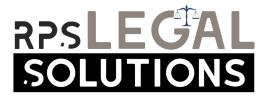Legal Intake Processes: How They Shape Client Relationships
First impressions matter, especially in the legal world. A well-structured legal intake process serves as the foundation for building trust and establishing strong client relationships. It’s the first point of contact where potential clients decide whether they feel understood, valued, and confident in the firm’s ability to handle their case.
An efficient intake process isn’t just about gathering information—it’s about creating a seamless experience that sets the tone for the entire client journey. By prioritizing communication and organization, law firms can foster connections that lead to long-term loyalty and positive outcomes.
Why Legal Intake Processes Are Critical for Law Firms
Legal intake processes define how law firms engage with potential clients during their first interaction. They ensure accurate data collection, effective communication, and alignment of client needs with the firm’s capabilities. By organizing key client information early, firms can assess case viability efficiently and allocate resources effectively.
Streamlined intake systems reduce administrative burdens, improving workflow efficiency and client satisfaction. They set the stage for clear expectations and transparent communication, minimizing misunderstandings or delays later in the engagement. A structured intake directly influences a firm’s ability to handle cases with precision and professionalism.
An efficient system enhances client trust, which strengthens the firm’s reputation. If firms prioritize personalized attention during intake, clients perceive the firm as reliable and client-focused, creating positive word-of-mouth. Adopting robust processes also aids in compliance, ensuring proper documentation and adherence to ethical standards.
Without a strong intake framework, firms risk operational inefficiencies and weakened client relationships. Every interaction during this stage establishes a foundation that echoes throughout the client journey, directly impacting satisfaction and trust-building in the firm. By refining what is legal intake and its implementation, law firms can optimize their processes and enhance client experiences effectively.
Components of an Effective Legal Intake System
Comprehensive Data Collection
Effective legal intake involves gathering detailed client information, including contact details, case specifics, and timelines. This ensures the firm accurately evaluates potential cases and aligns resources accordingly. For example, documenting injury details in personal injury cases or property specifics in real estate matters allows streamlined case development.
Initial Client Screening
Screening determines case feasibility by assessing the client’s legal needs, jurisdictional relevance, and conflict checks. Advanced screening practices identify conflicts of interest and ensure alignment with the firm’s expertise, reducing risks and saving time.
Organized Documentation Management
Centralized systems for storing and retrieving intake records improve accessibility and security. Documenting agreements, client forms, and case summaries ensures compliance with legal standards while simplifying case handovers within teams.
Clear Communication Channels
Establishing transparent and consistent communication during intake builds trust. Automated responses confirm receipt of inquiries, and follow-ups clarify case details. This approach addresses client queries promptly, leaving a positive initial impression.
Use of Technology
Legal software or customer relationship management (CRM) tools optimize intake by automating form submissions, appointment scheduling, and status tracking. Firms leveraging tools like ” Law Practice Pulse” streamline administrative processes and enhance client experience.
Personalization in Engagement
Tailored interactions show clients their specific needs are understood. Customizing follow-up communications and using client-provided details during discussions foster a sense of personalized service.
Workflow Integration
Integrating intake systems into broader firm operations eliminates bottlenecks. Tools synchronizing intake data with case management systems improve task assignment and case progression, supporting efficient workflows.
Improving Client Communication During Initial Consultations
Effective client communication during initial consultations is essential for setting the tone of the professional relationship. Comprehensive and clear communication allows clients to feel understood and reassured about the firm’s ability to address their needs.
- Outline Expectations Clearly
Lawyers can outline the consultation agenda to establish clarity from the outset. For example, they can explain the purpose of the meeting, what information they’ll need, and how the process will proceed. Transparency reduces client anxiety and aligns their expectations with the firm’s practices.
- Engage in Active Listening
Active listening ensures clients feel heard. Responding thoughtfully to their concerns and confirming details demonstrates genuine interest. For example, paraphrasing their concerns or summarizing key points shows attentiveness and promotes trust.
- Utilize Accessible Language
Avoiding overly technical jargon makes legal discussions easier for clients to follow. Choosing clear but professional terms ensures clients understand the process. For instance, replacing complex legalese with simplified explanations ensures inclusivity.
- Leverage Digital Tools for Communication
Online forms, chat features, or video conferencing tools can enhance client interaction. These methods provide flexibility for clients who need remote access while maintaining a seamless experience. Firms integrating such tools align their practices with modern client expectations.
- Personalize the Consultation Experience
Personalizing interactions strengthens relationships. Addressing clients by their names, recalling details about their cases, and expressing empathy create a client-focused environment. For example, noting their main concerns early on and revisiting them during the consultation enhances engagement.
Solid communication practices during consultations not only reflect professionalism but also lay the foundation for trust, which is central to any law firm’s success.
Documenting Case Information for Accurate Legal Representation
Gathering precise case details ensures attorneys can provide tailored legal strategies aligned with client objectives. During the intake process, law firms document essential information, including client background, case timelines, and evidence. Capturing this data accurately reduces the risk of errors or omissions that could affect case outcomes.
Organized record-keeping supports compliance with legal standards and simplifies case preparation. Firms often implement case management software to centralize information, making it easily accessible to the legal team. This approach streamlines workflows and enhances collaboration across departments.
Standardized forms promote efficiency by ensuring consistency in the data collected. For example, structured questionnaires can guide clients to provide relevant information about their legal issues. Automating data capture through online platforms further minimizes manual entry errors and saves time.
Clear documentation also reinforces transparency in attorney-client relationships. Providing clients with summaries of documented details ensures alignment on case strategy and decisions. Communication through client management portals enhances this transparency and fosters trust.
By integrating robust documentation practices into the intake process, firms can improve decision-making and legal representation.
Streamlining Intake Workflows with Legal Tech Solutions
Incorporating legal tech solutions enhances the efficiency of intake workflows by automating time-consuming tasks. Tools like case management software and client relationship management (CRM) platforms streamline data collection and organization. These technologies reduce manual entry errors and provide centralized access to case details, ensuring accurate and timely information handling.
Automated systems improve client communication by offering features such as pre-screening questionnaires and contactless form submissions. For example, online forms enable clients to submit detailed information at their convenience, minimizing delays and aligning with modern expectations for accessibility. Additionally, automated appointment scheduling eliminates redundancies, ensuring that clients’ time is respected.
Workflow optimization becomes seamless with real-time data synchronization across team members. Legal tech solutions integrate with existing systems, offering features like task prioritization and deadline tracking. This integration eliminates bottlenecks during the intake process and accelerates decision-making for case retention or referral.
Security remains a critical aspect, as legal intake processes involve sensitive information. Advanced encryption and secure cloud storage provided by legal tech tools protect client data and maintain compliance with legal standards. An effective tech ecosystem ensures confidentiality while improving operational efficiency.
By leveraging legal technology, firms reinforce their professionalism and align with the industry’s shift towards digital-first practices. This approach not only improves intake process efficiency but also ensures a client-focused experience that enhances trust and satisfaction.
How Strong Intake Processes Lead to Better Case Outcomes
A well-designed legal intake process serves as the cornerstone of successful client relationships and effective case management. By prioritizing clear communication, personalized engagement, and organized documentation, law firms can create a seamless experience that inspires trust and confidence.
Integrating technology into intake workflows further enhances efficiency, accuracy, and security, aligning with modern client expectations. These systems not only streamline operations but also ensure clients feel understood and valued from the very first interaction.
When firms invest in robust intake practices, they set the stage for professional excellence and lasting client satisfaction. Strong intake processes ultimately empower firms to deliver tailored legal strategies and achieve favorable outcomes, solidifying their reputation in an increasingly competitive industry.






